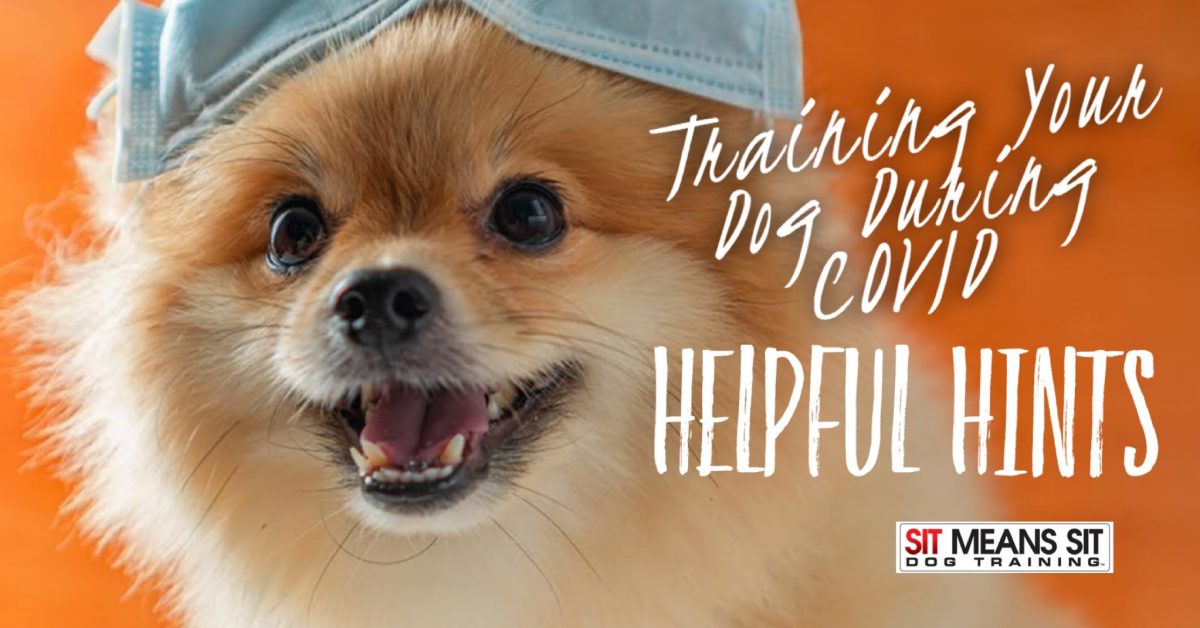
Dogs In The Time Of Covid: How To Maintain Training
“Animals have come to mean so much in our lives. We live in a fragmented and disconnected culture. Politics are ugly, religion is struggling, technology is stressful, and the economy is unfortunate. What’s one thing that we have in our lives that we can depend on? A dog or a cat loving us unconditionally, every day, very faithfully.” – Jon Katz
Wow, guys. This year has been a doozy and it shows no signs of letting up before it’s over. We’ve all had to adjust and readjust our personal routines in the face of viral threat, which includes changes in the way we interact with everyone, including our pets. People everywhere have dialed back on collective interactions with their dogs but we’re here to offer advice on how to keep your dog engaged and balanced through these socially distant times!
First, let’s define socialization in training terms. Too many people believe that proper socialization is all about throwing our dogs into situations that may contain other dogs, strange people, other types of animals, and foreign environments with the expectation that they’ll overcome and adapt with no reactivity or discomfort. While there are certainly dogs that may come straight from their mama with bomb-proof and perfectly balanced confidence, we know that the majority of dogs need help to make the best decisions under those circumstances. Real social skills are evidence of proper training with a focus in exposure and conditioning with balance so that we can feel confident that, at minimum, our dogs can be tolerant of their environment and look to us, their people, for guidance in engagement as they need it. So while many of us dog people are spending more time at home and away from company due to Covid, there are still a number of exercises you can work on to keep your pup’s brain working and encourage proper social skills!
For puppies, everything is brand new and the key to set them up for future success in training is to create positive associations with these new experiences to promote the right kind of confidence. This includes:
- Body and spatial awareness – everything is an obstacle course when you’re brave enough! Pair instant reward with items found in your household, like an old wooden ladder she can jump through, or hinge sturdy wooden planks for a dog walk with changes in elevation. Better yet, take your no longer needed “dinner out” budget and invest in training equipment like agility tubes, wobble boards, and balance pods to help boost your pup’s dynamic balance, independent limb awareness, and coordination while developing his motor skills! In the long run, a puppy that’s been conditioned to move through, over, around, and on different surfaces with different elevations will transition more easily into real obedience training.
- Introductions to new environments, surfaces, etc. – here’s the tricky one! The current state of affairs limits us all in terms of interaction, but there are still plenty of opportunities to engage in training. Puppies regularly go to the vet for preventative care in their first 2-6 months, and while we may have to wait in the parking lot for the duration of their exams, we can still explain to vet staff where we’re at in our training goals and ask for report cards at the end of each visit to determine what went well and what needs help. Regularly touching ears, legs, feet, giving baths, and brushing coats give us the chance to show pups that being handled isn’t cause for alarm when positive results are rewarded. Taking walks in crunchy leaves or melting snow, and walking on different surfaces indoors like carpet, tile, and hardwoods show the littles that different surfaces don’t have to be a challenge. You can even introduce out of the ordinary noises like cheering crowds and audience applause at televised events (or other sounds) by starting on a low volume and increasing it gradually until the whole house is clapping along. Don’t be afraid to get creative!
- Check out some more tips in Michelle’s puppy engagement video!
For adult dogs, daily exposure exercises aren’t as critical, but no one wants to let their normally social dogs go bored. Keep those doggos active and stimulated with puzzles and play, and don’t hesitate to bring out those training leashes and work in some new and creative repetitions with the commands they already have, like placing on objects they’re not used to. Get your tripods out and make movies while training to send to friends and family for a much-needed happy surprise in their inbox! Hit the road in safety with appropriate travel gear like travel crates and seat belts so you and your best friend can find that trail you haven’t hit yet or even just to see their friends at your favorite drive-thru. Be sure to maintain social distance on walks and to keep an eye on your neighborhood/town/city/state’s regulations for curfews and face coverings, as well as the CDC’s recommendations for pet safety.
Stay safe, training family, and Happy Holidays from all of us at SMS!
